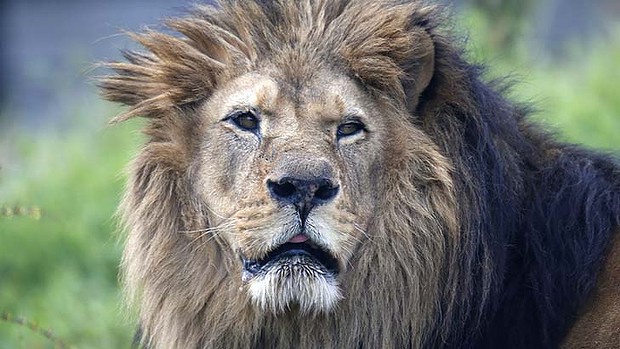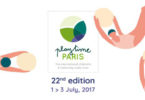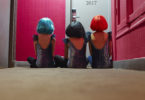The Paris Zoo is ready to reopen on the 12th of April 2014, after a full renovation which has taken almost six years! I am pretty sure that when we arrived in Paris, early 2008, it was already closed! So guess what we’re doing coming weekend? Don’t you just love taking your children to the Zoo?
Want to know a little bit more about the Zoo? Read this weeks interview with Sophie Ferreira le Morvan, director of the zoo.
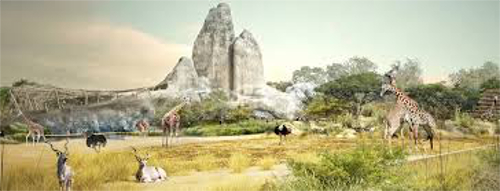
What is the history of the Parc zoologique de Paris?
A temporary zoo had been created in 1931 for the World Fair. It was such a success that it was decided to preserve it permanently and so it has been here in the Bois de Vincennes since 1934.
The zoo closed in 2008, what renovations have taken place?
More than a renovation, the entire site has been redesigned and refitted. First of all, the animals were transferred to other zoos – except for the giraffes. We did not want to break up the social structure of the group, and no other zoo could accommodate the whole herd, so we housed them in a comfortable enclosure protected from the noise of the building site. All the park has been razed to the ground, then rebuilt and replanted. We are currently in a phase of reintroduction of all the animals at the same time; it is a huge world première.
How is the park laid out for a visit?
Our concept is to plunge visitors into the animal environment. First and foremost, the Parc zoologique de Paris is a recreational site with an educational objective. There is a choice of two itineraries for the public: the main 3-kilometre itinerary, and a secondary 1-kilometre itinerary, for a more in-depth visit.
Will the ‘behind-the-scenes’ of the Parc zoologique be accessible to the public?
Absolutely! This has already been planned for and will be integrated into the itinerary around the zoo every day for all visitors. First of all, the public will be able to see the main kitchen as well as the glasshouse kitchen, with a viewing window opposite where the animals’ meals are prepared. Then the public will be able to see the veterinary clinic: a first viewing window will look onto the surgery room, and a second onto the medical x-ray room. The zoo’s daily programme will also include the opportunity to see the feeding of the animals and medical training.
What is medical training?
What you should know is that it is not a show! Medical training enables veterinary surgeons to examine animals with confidence and in safety. For example, our sea lions do not know how to spin a ball on their nose, but they learn how to hold out their flipper while staying in one position, making it easy to take a blood sample or make a clinical examination. Giraffes learn to hold up their hooves for trimming and therefore avoid having to have a general anaesthetic, always a delicate affair. It is the vets and animal carers at the zoo who carry out the medical training, according to American methods.
Another technique that we use is positive reinforcement: in this case, it is the natural behaviour of the animal that is encouraged, with a system of rewards. Holding out a leg or a paw, for example, or opening their mouth when told to do so … All these techniques make it possible to avoid as much as possible the stress involved in clinical examinations and acts of animal carers.
The zoo’s famous rock has been retained, for the delight of Parisians, who know it as a landmark of the zoo; will it be possible to go inside?
This false rock has concealed the zoo’s water tower since 1934: it is not therefore accessible to the public. But underneath there is the vivarium-terrarium of the Europe zone.
Will the Parc zoologique de Paris show rare animals?
Yes of course, we want to surprise visitors! The fossa of Madagascar, for example – we are the only ones to have it. Manatees are also very rare, there is only one other zoo in France that has one; they are an endangered species, rare in captivity as they need very large tanks, and they do not breed easily …
Due to the lack of space there will be no bears, but there will be a wolverine, not a very well-known species, that will be housed in the Europe biozone.
The aviary is going to be enormous, 2,000 m²! How will visitors be able to see the birds?
Perches and feeding stations have been installed: we have therefore been able to establish strategic observation points for the public. In general, some of the animal houses at the zoo may be visited; in the giraffe house for example, there will be an upper gallery that will enable visitors to find themselves nose to nose with a giraffe at times when the giraffes are not going out. The racks for the branches are also installed next to the public gallery. We have also installed a heated rock for the lion, close to a viewing window; the lion will receive a carcass once a week – this will be indicated in the programme of events – and the public can stand in a strategic spot to watch it tear it apart.
Do all the animals in the zoo have a name?
All those that can be identified, yes – for example, we don’t give names to the pink flamingos as there are dozens and dozens of them! It is more the mammals, like the giraffes for example. It is the animal carers that choose their names when they are born; animals that come from other parks already have a name.
When the park opens on the 12th of April, what facilities will there be for the public?
Places to eat of course: two restaurants, four kiosks for snacks, and mobile food sales. There will also be a shop, left-luggage service, and wheelchair and pushchair hire. Finally, tour guides will be available to give guided tours, in French and in foreign languages; also workshops on different themes, like for example spending a day in the role of an animal carer.
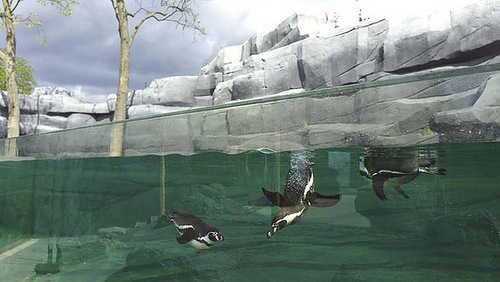
Adult ticket: 22 euro’s Children pay (3 to 11): 14 euro’s
Métro : Line 8, station Porte Dorée : less than 10 minutes walk, Linee 1, station Saint-Mandé :about a 15 minutes walk, Ligne 1, station Château de Vincennes, after you take bus 46
Bus : 46, 86 et 325 (stop : Parc Zoologique) or Tramway : ligne T3 (stop Porte Dorée)
http://parczoologiquedeparis.fr

